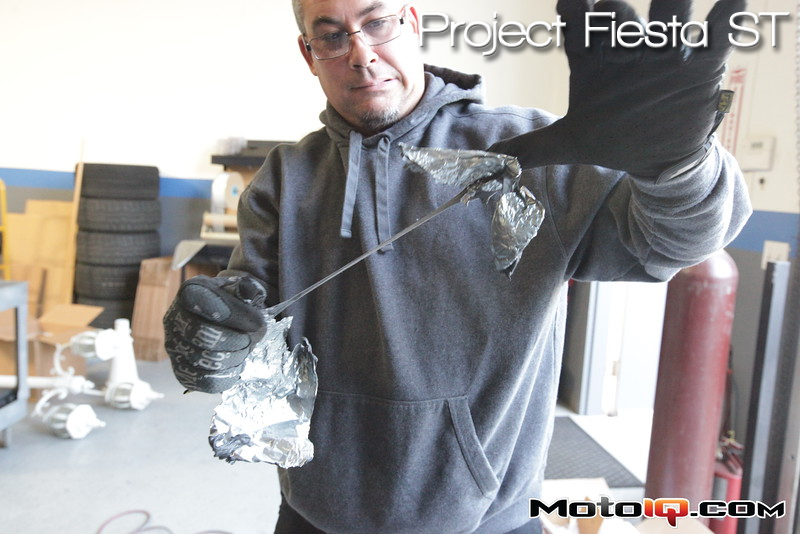,
 After totally stripping and cleaning the interior, Scott bent up the main hoop and dummied up some of the other tubes, tacking them in place to confirm fit. He also made the floor plates. The floor plates all tie into major structural parts of the unibody, not just the floor. Scott also used blue tape to estimate how long some of the tubes had to be cut and to visualize where they might be located in the final product.
After totally stripping and cleaning the interior, Scott bent up the main hoop and dummied up some of the other tubes, tacking them in place to confirm fit. He also made the floor plates. The floor plates all tie into major structural parts of the unibody, not just the floor. Scott also used blue tape to estimate how long some of the tubes had to be cut and to visualize where they might be located in the final product. As the cage progresses, Scott fits more of the tubes and tack welds them in place. This cage is going to be pretty inclusive and really tie the car together all while providing a lot of driver protection.
As the cage progresses, Scott fits more of the tubes and tack welds them in place. This cage is going to be pretty inclusive and really tie the car together all while providing a lot of driver protection. Here is a close up of the door bar and A pillar bar detail. Scott takes a lot of care to ensure a tight fit of the cage to the unibody and stitch welds the tubes to the unibody where they actually touch to improve overall chassis stiffness. Scott’s mitering is very tight and he uses a TIG welder which he pulses to keep the heat low. Scott is using 0.095″ thick wall 1.75′ diameter DOM tubing for most of the cage, a step up from the smaller tubes allowed in drift cars.
Here is a close up of the door bar and A pillar bar detail. Scott takes a lot of care to ensure a tight fit of the cage to the unibody and stitch welds the tubes to the unibody where they actually touch to improve overall chassis stiffness. Scott’s mitering is very tight and he uses a TIG welder which he pulses to keep the heat low. Scott is using 0.095″ thick wall 1.75′ diameter DOM tubing for most of the cage, a step up from the smaller tubes allowed in drift cars. You can see some of the roof bar and main hoop details here. Look how tight the fit is. On the tubes that are still tack welded you can see how tight the mitering is.
You can see some of the roof bar and main hoop details here. Look how tight the fit is. On the tubes that are still tack welded you can see how tight the mitering is. Looking at the floor plate detail, you can see how the plate wraps around the frame rail and how the tubes are stitched to the base of the A pillar. No simple plate on the floor here. The leg of the cage also goes all the way forward and butts into the wheel well to guard against tire intrusion into the driver’s compartment in a severe accident.
Looking at the floor plate detail, you can see how the plate wraps around the frame rail and how the tubes are stitched to the base of the A pillar. No simple plate on the floor here. The leg of the cage also goes all the way forward and butts into the wheel well to guard against tire intrusion into the driver’s compartment in a severe accident.


